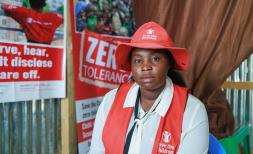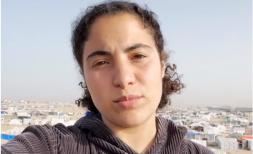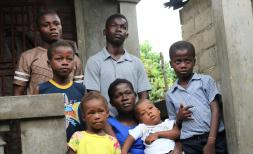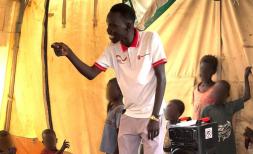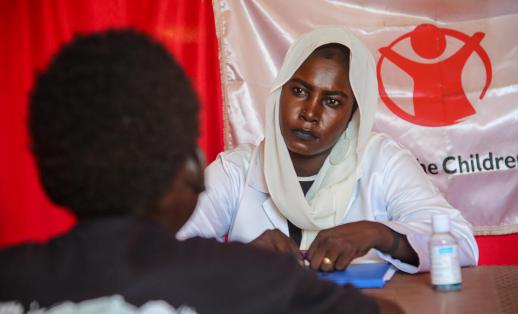10 things you need to know about famine
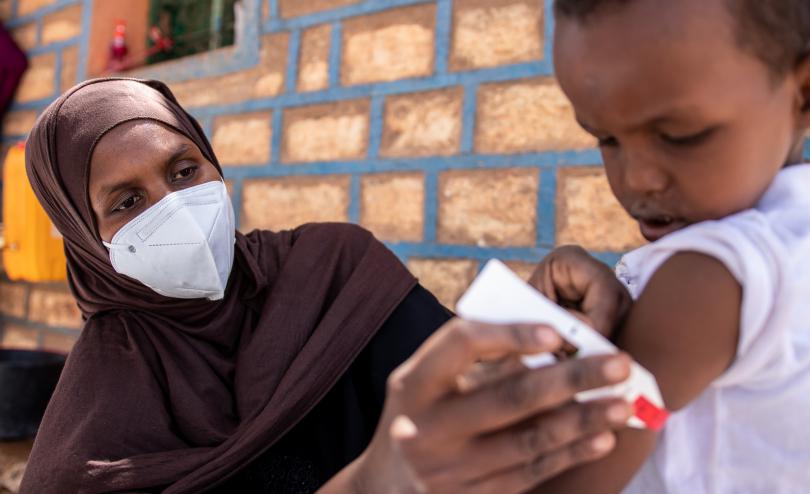
We need to talk about the F-word.
Parts of Somalia are at risk of famine, but what does that mean for the children and families affected, and what happens next?
Here is an explanation of famine and why the F-word is used in the humanitarian sector only when a food crisis has reached a calamitous stage. It is rare, but when famine does occur, it means that there is an extreme shortage of food and that children and adults within a defined area are already dying of malnutrition on a daily basis.
1. What is famine?
Famine is the most severe phase of the United Nations system to monitor food insecurity. It was set up in 2004 and has become the global standard for the classification of acute food insecurity. The Integrated Food Security Phase Classification (IPC) system uses a set of standardised tools to provide a "common currency" for classifying the severity of food insecurity, focusing on intensity rather than magnitude. It starts at IPC Phase 1, with famine being IPC Phase 5.
2. What conditions need to be met to be declared a famine?”
A famine classification is assigned when an area has at least 20% of households facing an extreme lack of food, at least 30% of children suffering from acute malnutrition, and two people out of every 10,000 dying each day from outright starvation or the interaction of malnutrition and disease.
3. What is the purpose of the IPC system?
The main goal of the IPC system is to generate the information decision-makers need to trigger action to prevent hunger crises from deteriorating further and save lives. It provides them with evidence- and consensus-based analysis of food insecurity and acute malnutrition to inform emergency responses as well as medium- and long-term policy and programming.
4. Who decides when to declare a famine?
The determination is generally made jointly by several parties, primarily the government of the affected country and various United Nations agencies. The declaration is normally informed by a famine classification through the IPC system and an analysis by the "Famine Early Warning Systems Network" (FEWSNET).
FEWSNET was set up by the U.S. government in 1985 to collect and analyse data from various sources after devastating famines in East and West Africa, including the deaths of about one million people in Ethiopia in 1984.
The decision to declare famine is highly political and there are many cases of the threshold to call famine being met without a formal declaration.
5. Does a famine declaration enforce action?
No. The declaration of a famine carries no binding obligations on the UN or member states but serves to focus global attention on the problem.
6. When was the last famine declared?
Famine was declared in parts of South Sudan in February 2017 where nearly 80,000 people faced famine conditions (IPC Phase 5) in parts of Unity State in the central north. Another one million people were classified as being in emergency conditions or IPC4. This followed three years of civil war that had devastated livelihoods, coupled with an ailing economy and high food prices.
7. Has Somalia been declared famine before?
A famine was declared in parts of southern Somalia in 2011 when 490,000 people were experiencing catastrophic levels of acute food insecurity or IPC5 due to conflict, drought, and high food prices. About 260,000 died, over half of whom were children aged under 5. When another drought crippled Somalia in 2017, rapid action helped avert a famine.
8. What action can be taken to avert a famine?
Four key areas are critical to averting famine: 1) early warning and action, 2) an international coordinated response, 3) full and unimpeded humanitarian access and 4) cessation of conflicts.
These factors are needed to ensure food, agricultural inputs, livestock supports, water, sanitation and hygiene, health and nutrition reach the most vulnerable communities. Full and unimpeded humanitarian access is particularly essential to establish operations, as well as move goods and personnel where they are needed. This is particularly the case in conflict zones where safe access is critical.
While it is vital to respond in the short term to save lives, the long-term focus must be on the underlying drivers of hunger, malnutrition and food insecurity, including conflict and climate change. This includes building the resilience of families’ livelihoods, markets and food systems while governments must implement long-term, costed nutrition plans.
9. Why are children affected more by famine than adults?
Children facing malnutrition due to starvation are much more susceptible to disease and illnesses such as dysentery, diarrhoea, cholera, malaria and pneumonia. Without enough nutritious food to eat or the ability to absorb the right nutrients due to illness, children under five are at high risk of acute malnutrition which can lead to death - or if a child survives, can cause stunting, and impede mental and physical development longer term.
Famine conditions also make families much more likely to take drastic measures to survive, including marrying younger children off for food or money or taking children permanently out of school to work.
10. Why is the use of the term famine so controversial?
Famine has both human and political connotations. For people, it destroys livelihoods resulting in life-threatening shortages of food, increased severe malnutrition, disease outbreaks, and excess deaths. For humanitarian organisations, famine is the outcome of prevention and response failure. For governments, it can be politically contentious as it can point to a failure of governance and the inability to provide basic protection for people.
WHAT WE’RE DOING AND HOW YOU CAN HELP:
We are working around the clock to support families with food, cash, and supplies so children have access to nutritious food. We are working with partners to help communities spot early warning signs and take the necessary measures to prevent hunger. We are supporting children to get the food they need to survive.
Our hunger and nutrition programmes help millions every year. But we can’t do it alone.
This is not just happening in Somalia, but also across the Horn of Africa is facing a hunger crisis. A fourth season of failed rains is causing the worst drought in 40 years. We are witnessing the impact of the climate crisis right before our eyes. The situation is exacerbated by the war in Ukraine increasing food prices, making staples unaffordable for hundreds of thousands of families… As you read this, one person is likely to die of hunger every 48 seconds.
The lives of children are hanging in the balance.
